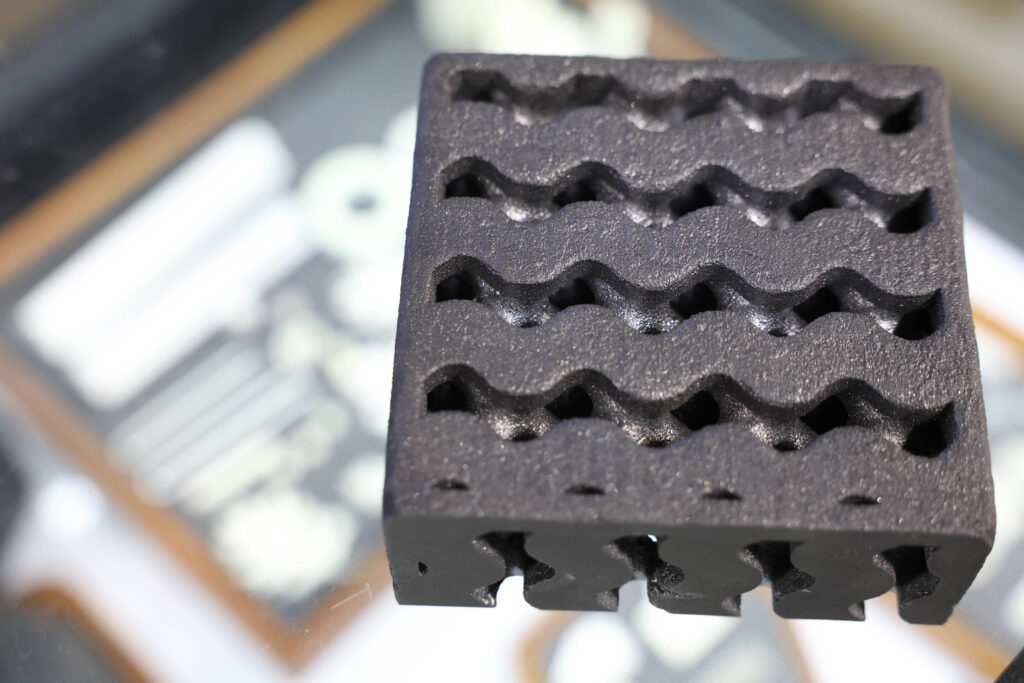Scientists at the U.S. Department of Energy’s Oak Ridge National Laboratory have integrated binder jet additive manufacturing with an advanced post-processing method to fabricate leak‐tight ceramic components, overcoming a key challenge of ceramic additive manufacturing.
While ceramic components perform exceptionally well in extreme environments—exhibiting high temperature resistance, chemical stability and mechanical strength—current methods of ceramic 3D printing fall short on scalability. This shortcoming limits their use in critical applications such as high‐throughput chemical reactors, which are used for pharmaceutical or chemical processing, where large, leak‐proof parts are essential.
ORNL’s innovative solution provides a scalable method for creating complex ceramic structures by leveraging a robust joining technique that enables smaller 3D‐printed pieces to be assembled to create the needed components.
The paper is published in the journal Ceramics International.
“Ceramic 3D printing allows fabrication of intricate and high‐performance components that are difficult to achieve with traditional manufacturing methods,” said lead researcher Trevor Aguirre with ORNL’s Extreme Environment Materials Process Group. “This advancement provides a validated methodology to produce high‐quality components—and enable the development of next‐generation reactors.”
-

From left, Corson Cramer, Trevor Aguirre and Amy Elliott discuss the silicon carbide gyroid component, which was 3D printed using the binder jet printer displayed in the background. Credit: Credit: Amy Smotherman Burgess/ORNL, U.S. Dept. of Energy
-

From left, Amy Elliott, Trevor Aguirre and Corson Cramer stand next to a tube furnace, which was used for heat-treating the materials used in this study. Credit: Amy Smotherman Burgess/ORNL, U.S. Dept. of Energy
The research team tested multiple design configurations to identify optimal structures that inherently support gas‐tight integrity and developed post‐processing techniques to enhance the bonding and sealing of ceramic segments.
Not only does the innovation help meet the increasing demand for large‐scale components, but it also leverages cost‐efficient binder jet additive manufacturing, or BJAM, where powder layers are fused with a binder to create solid objects. This method offers substantial economic benefits and paves the way for broader industrial adoption of ceramic additive manufacturing in other high‐performance applications such as aerospace, among others.
This is the first known leak‐tight joint fabricated using additive manufacturing methods, paving the way for scalable BJAM assemblies.
More information:
Trevor G. Aguirre et al, Packing density optimization and recyclability of multi-modal SiC powder feedstocks in binder jet additive manufacturing, Ceramics International (2025). DOI: 10.1016/j.ceramint.2025.07.410
Citation:
Unlocking ceramic 3D printing for next-generation chemical reactors (2025, September 17)
retrieved 18 September 2025
from https://techxplore.com/news/2025-09-ceramic-3d-generation-chemical-reactors.html
This document is subject to copyright. Apart from any fair dealing for the purpose of private study or research, no
part may be reproduced without the written permission. The content is provided for information purposes only.

